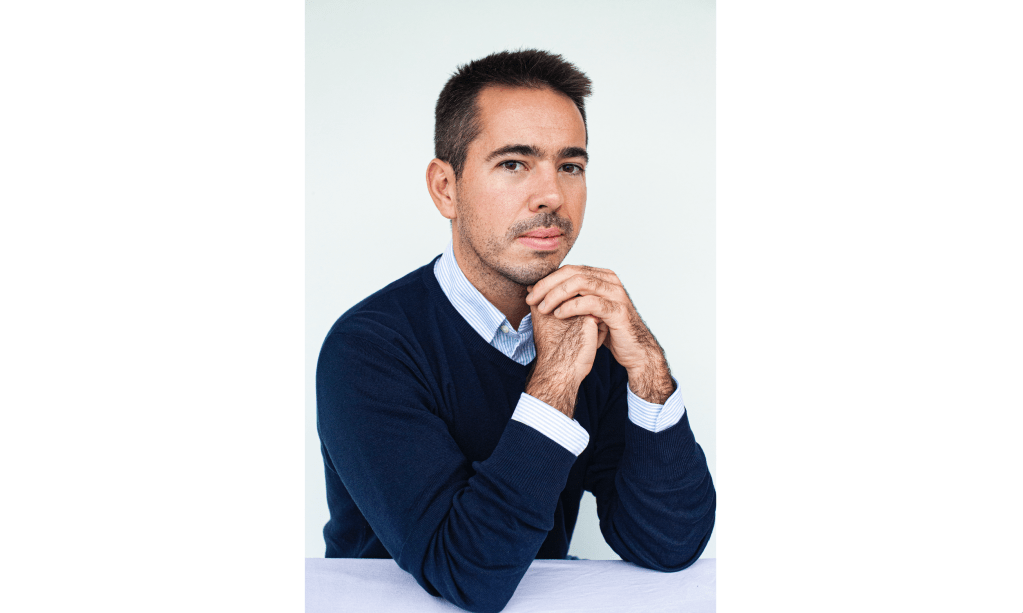Editor’s Note: This story is part of Newsmakers, a new ARTnews series where we interview the movers and shakers who are making change in the art world.
In 2021, while an associate curator at one of New York City’s temples of experimental contemporary art, the Swiss institute, curator Daniel Merritt said that art history played a role is his practice, but was not a hill to die on.
“What I think builds interesting curatorial work,” he said at the time to Cultured, “is not entrenching yourself too much in a certain discipline. You have to remain flexible to current events.” It’s not art history that drives his practice, he added, but rather “knowing when to present the work and having the audience want to hear from or engage with the subject at hand.”
Related Articles

Like that of a performer, Merritt’s north star has more to do with timing and knowing his audience than museum catalogs and scholarly texts. While he is no longer at the Swiss Institute, Merritt’s ethos hasn’t changed, even if the backdrop has. In 2023, he left New York City to become the director of curatorial affairs at the Aspen Art Museum, which sits at the center of the art world’s Rocky Mountain Mecca.
Just last week, Merritt was named the museum’s chief curator. The promotion is well-deserved, judging from the four shows currently on view in Aspen: “Heji Shin’s America: Part One;” Shuang Li’s “I’m Not” (co-curated by the Swiss Institute’s Alison Coplan); Ugo Rondinone’s “the rainbow body” (organized along with museum director Nicola Lees and curator Simone Krug); and Megan Marrin’s “Austerity” show. The shows demonstrate the breadth of Merritt’s curiosity, intellect, and playful sensibility, touching on everything from the struggle against nature to an arguably unhealthy obsession with the post-hardcore/emo band My Chemical Romance.
ARTnews spoke with Merritt to learn more about how he approaches organizing a show, what drew him to Aspen, and his thought process when it comes to organizing a show.
This interview has been edited and condensed for clarity.
ARTnews: Let’s start at the beginning of this chapter of your career. How did you end of up in Aspen?
Daniel Merritt: A while back I got an email from Nicola [Lees, the CEO and artistic director of the museum] inquiring if we knew of anyone who might want to take a position or could be a good fit for a position at the Aspen Art Museum. I had known Nicola for a few years at that point. We were East Village neighbors while she was running the gallery 80WSE at NYU and I was working at Swiss Institute. There was a lot of overlap and I followed her program very intently. I thought they were doing such incredible things and there was really just kind of such an open curiosity that I recognized within Nicola that I thought it would be really fun opportunity to work together. So I threw my hat in the ring myself.
What was your first project at the museum and describe the working process there—how do exhibitions come to light?
In my first few weeks at the Museum, I worked with the education team on the Youth Art Expo, a long-standing program that the museum initiated back around its founding in the late ’70s that featured the artwork of upwards of 1,000 kids in Colorado’s Roaring Fork Valley and beyond. Two floors of the museum were devoted to this artwork. As I was literally landing at the museum, all of this artwork was filling the galleries. I couldn’t think of a better project with which to get my bearings but also to understand that the museum was operating in really exciting and bold, unconventional ways.
That project really conditioned the way I think about making exhibitions for the museum and commissioning living artists today. More broadly, it’s nice to think of seasons. In a seasonal place like Aspen, you think about who is in town at that time and why they’re visiting this very small town in America. During winter, it’s really people who ski. There’s an extreme adrenaline junkie attitude to a lot of the people in town so you want to cultivate exhibitions that match that energy. It’s fun to think about how you might build on what may be considered a pop sensibility. The shows that we have really push that concept outward in interesting ways.
Do the visitor figures spike around the ski season?
The population of Aspen fluctuates by the thousands when we are “in season.” It makes you think about the audience in a different way. But there is a core group of individuals who are at the museum at least three to four days a week. It’s a community hub for them. And that goes beyond Aspen. It’s Basalt, Carbondale, Glenwood Springs—the entire Valley. I think very much about the core audience that comes to the museum so consistently. That’s what’s so interesting about the Aspen Art Museum as opposed to a museum in an urban center. We have so many repeat customers because we are the largest museum for hundreds of miles. On the one hand, you can really contemplate the seasonality of it, but you also want to mount exhibitions that people want to come back to. You really have to wear two hats in that way.
Tell me about Heji Shin’s exhibition. I love that you’re often bringing photography center stage.
I’m so proud of this project. It’s entirely new work and Heji’s first solo museum exhibition in the United States … When we invited her to do the exhibition, we started with a prompt, which is uncommon for me. I asked her to step out of the studio and go on an American road trip and photograph the US. So much of her work comes together in these closed environments. One of the first stops on the trip was in Cape Canaveral, Florida where she started photographing rocket launches. She had never photographed a rocket launch before. I think she would admit to this, but both she and I really underestimated the uniqueness of that photographic process. It’s very drawn out … We were very fortunate to get access through NASA and the press corps of the aerospace companies. She spent a lot of time with people who devote their lives to taking pictures of rockets. She learned a lot in an incredibly compressed amount of time. The results are quite poignant and pull out the energy of the scene.
Going back to what you said about organizing shows for that group that like to live on the edge—I hear there’s something exciting with Alex Israel coming up soon.
It opens on President’s Day. Alex is doing a project in collaboration with the Aspen Art Museum and Aspen One, the ski company that runs the four mountains here in the valley. There’s a restaurant on the face of Aspen Mountain, formerly known as Ruthies, that’s been uninhabited for well over a decade. I was shocked by that. You can ski by it. It’s this fully intact shell that is in pretty good condition. I was in Alex’s studio and I noticed this series of paintings of celebrities who had died since the invention of Instagram. It was a really poignant departure in his practice, a rumination on how loss is collectively processed and how, when a celebrity passes away, the same five images ricochet through your social media feeds. So this abandoned building, which has an almost omniscient position over a thousand feet above street level overlooking the town, seemed like the perfect place to explore that.
There really is a heavenly quality to the space. We decided to take it over temporarily and rebrand it as “Heaven.” Alex, in a nod to Los Angeles history, which is so important to him, pulled the graphics that accompany the exhibition and all of the signage from a novelty store called Heaven that was in Century City in the 1970s and ’80s. You can look up pictures of Brooke Shields and these teen actors from the ’70s and ’80s and they are wearing Heaven merchandise. And so he is colliding all of these things together in this very adventurous place, where you can ski up, turn into this surreal environment, and then continue on your way. We would be remiss if we didn’t do those things, if we didn’t venture out into the landscape, if we didn’t explore buildings, and ask, “Hey what’s like really going on in there? Can we use it? Can we show art in it?”
That’s the spirit that Nicola and I want to bring to the museum and to the town.
Alex Israel’s Heaven exhibition opens on February 15 and runs until March 16 at Ruthie’s, stationed at the base of the treasured Ruthie’s Run on Aspen Mountain. The project includes a lift ticket and on-mountain signage designed by Israel.






